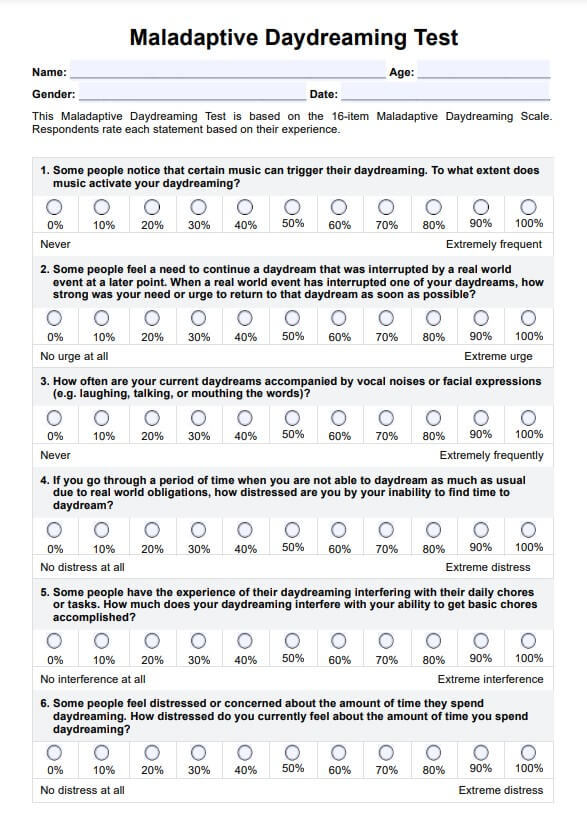Maladaptive daydreaming can be identified by specific symptoms that distinguish it from typical daydreaming. Key indicators include daydreams triggered by real-life stimuli, unconscious facial expressions or movements during daydreaming, prolonged episodes lasting from minutes to hours, and significant interference with daily functioning, such as trouble focusing on tasks or sleeping.

Maladaptive Daydream Test
Get access to a Maladaptive Daydreaming Test. Use it as a screener or for research into the maladaptive daydreaming coping mechanism.
Maladaptive Daydream Test Template
Commonly asked questions
Self-diagnosing maladaptive daydreaming involves reflecting on the frequency and intensity of daydreaming episodes and their impact on daily life; however, it is always best to consult with a mental health professional. Our test template, which contains the 16-item Maladaptive Daydreaming Scale (MDS-16), can be used as a screener before scheduling a mental health consult.
Maladaptive daydreaming is not exclusive to individuals with attention deficit hyperactivity disorder (ADHD), but there is a notable correlation—many maladaptive daydreamers also report ADHD symptoms, as the impulsivity and distractibility associated with ADHD may make individuals more prone to engage in extensive daydreaming. Maladaptive daydreaming has been linked to dissociative disorders because of maladaptive daydreamers' tendency to disconnect from reality during daydreaming episodes.
EHR and practice management software
Get started for free
*No credit card required
Free
$0/usd
Unlimited clients
Telehealth
1GB of storage
Client portal text
Automated billing and online payments











